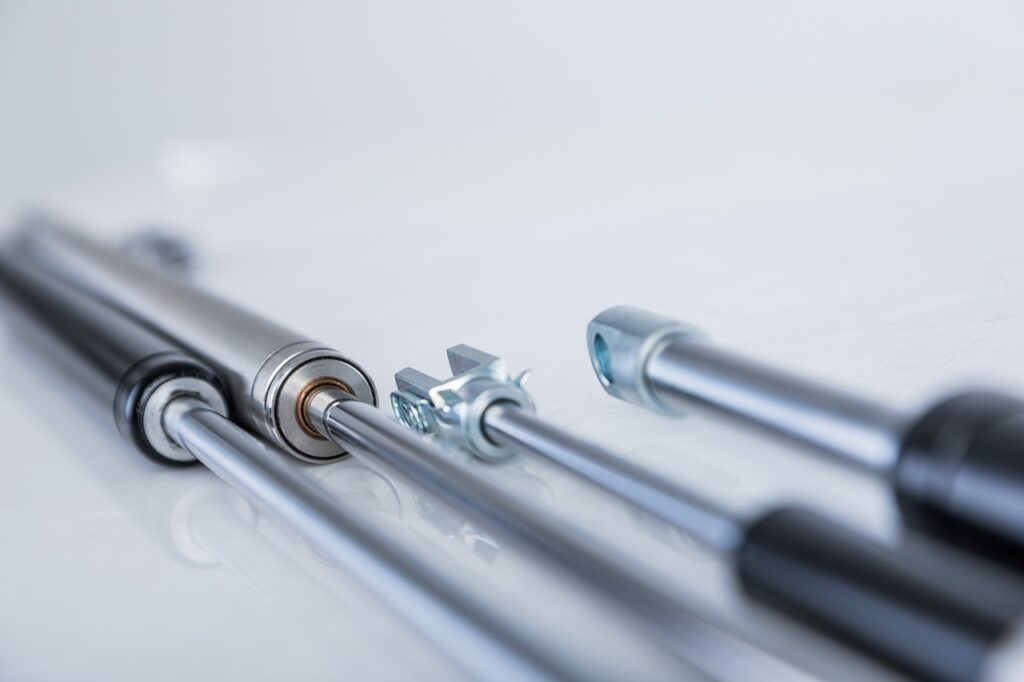Gas struts are used to gradually open or close various applications. They are used, for example, for lifting, raising or lowering heavy values or hatches. A gas strut is the most common name in the UK, but they are sometimes also referred to as gas springs, gas lifts, gas props, gas arms or gas shocks.
What is a gas shock absorber industrial?
A gas shock is a hydraulic shock which is injected a certain amount of low-pressure gas or oil. Most often nitrogen gas is used. A gas shock dampens or slows down a motion, so they are used in cars, trucks, on doors and in airplanes.
How does a gas shock absorbers industrial work?
The most important function of gas charging is to minimize aeration of the hydraulic fluid. Industrial shock absorbers are commonly used in smaller airplanes. For example, when the door of the aircraft is opened, you will notice that it is thrown open. However, you will see that it will always open very gradually. This is due to the gas damper. The gas damper ensures that the energy is collected, so that the door opens smoothly.

What is the difference between a gas strut and an industrial shock absorber?
The difference between a gas strut and a gas shock is that a gas shock doesn’t return the energy that it has just collected. That is the essential difference between a gas shock and a gas strut. Because a gas strut works both ways. A gas strut supports both opening and closing an application. In addition, a gas shock works by means of oil instead of gas. This is another major difference. However, the two types of gas springs are often confused with each other. A gas damper is frequently used as a synonym for gas springs.
Why is a gas charged shock better than a hydraulic shock?
If you are using a gas shock as a damper, for instance on your truck, then we recommend gas charged shock instead of hydraulic shocks. There is no risk of air mixing with the fluid (what we call aeration). This will cause foam and decrease the performance.
Our calculating tools for industrial shock absorbers
We offer three options for finding your gas spring. Either use our calculator when you are not sure which gas strut and what force (N) you need. The calculator will calculate the required gas spring, based on the data you have entered. Are you familiar with using a gas spring? Then use the configurator. Here you can assemble a gas spring yourself, including the corresponding mounting parts. The last option is to find a replacement gas spring for your current gas spring. Use the replacement search function, where you can enter the article number of your current gas spring. The search function will find a suitable replacement.







